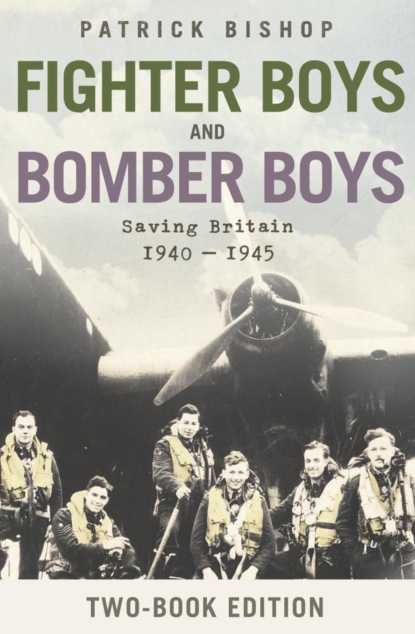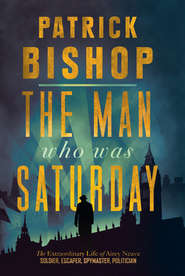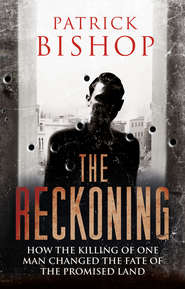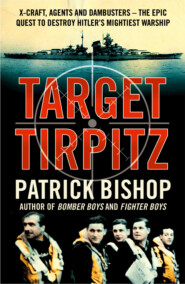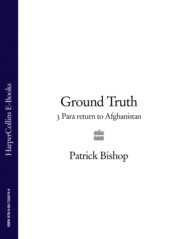По всем вопросам обращайтесь на: info@litportal.ru
(©) 2003-2024.
✖
Fighter Boys and Bomber Boys: Saving Britain 1940-1945
Настройки чтения
Размер шрифта
Высота строк
Поля
Most of the men in the White Hart Hotel that evening were pilots from the fighter station at Biggin Hill, seven miles away through ragged, dusty-green lanes, across wheat fields ripened to the colour of wet sand. Watching them was an American journalist who had driven down from London that afternoon. In his report he wrote that he ‘found it incredible that these noisy youngsters were in fact front-line troops, even then in the thick of battle’.
It was true. The boisterous young men, tankards and cigarettes in hand, the top buttons of their slate-blue uniform tunics undone to show the world they were fighter pilots, had been on duty since the first light of what had been an unusually misty summer morning. Some had been in action three times.
The day had seen the most intense air fighting in history. The pilots had won a remarkable victory, though not as great a one as the official figures suggested. In fact seventy-eight German aircraft had been knocked down. It was less than half the number claimed, but there was no doubt that the Luftwaffe had been made to suffer.
Half of the men were from 32 Squadron. At the centre of the crowd was the new commander, Flight Lieutenant Michael Crossley, thin and dark-haired, with deep-set humorous eyes, who at six foot two was half a head taller than the other pilots. Before leading the men off, as the dusk thickened, for pints of the warm sudsy Page & Overton bitter that the White Hart’s landlady Kath Preston served from wooden casks, he had recorded the events of the day.
Down to Hawkinge 1 p.m. and from then on had a remarkably blitzy afternoon. Chased something up to Harwich and got mixed up with 109s going home. Got none. They got Grubby Grice instead who descended into the sea…back to Biggin to refuel. Off to Portsmouth and attacked thousands of 88s and 110s, got three. Refuel again and attack thousands of 17s who were beating up and bombing Croydon. Slapped down seven. ‘Polly’ Flinders took training flight out and he and Humph slapped down one each. Day’s bag twelve.
(#litres_trial_promo)
The 109s mentioned in this laconic entry were the Messerschmitt fighter escorts shepherding the fleets of raiders that arrived in successive waves from late morning. The ‘88s’ were Junkers 88s, twin-engined medium bombers. The ‘110s’ were Messerschmitt 110s, twin-engined fighters, and ‘17s’ were Dornier 17s, another medium bomber. The Germans had come in unprecedented numbers, launching attacks across an 800-mile front that reached from Edinburgh to Exeter in an effort to overwhelm Britain’s air defences and prepare the way for invasion.
The main engagement of 32 Squadron came late in the day. Shortly after 6 p.m., as the sun slipped westward, a force of Me 110s and 109s crossed the Kent coast near Dungeness and raced towards what they thought to be the RAF base at Kenley, a vital station in the RAF defensive system. A mistake in navigation meant they dropped their bombs on Croydon aerodrome instead. The effect was devastating. The bombs crashed between buildings. The blast rolled back and forth to maximum destructive effect. The passenger terminal, which before the war had been a symbol of all that was hopeful and positive about the new world of aviation, was wrecked. Sixty-eight people were killed, all but six of them civilians. There had been no warning. The air-raid sirens sounded fifteen minutes after the attack began.
The streets around the aerodrome were full of people. Newspapers had warned that morning that the air fighting of the previous few days had been only a prelude to the real battle. Invasion fears were excited by the discovery of parachutes scattered across the Midlands and Scotland – but no parachutists. The sight of the bombers sent people running to the earth-and-corrugated-iron shelters they had dug in their back gardens. Others were too absorbed in the drama to take cover. Mr H. J. Edgerton of Couldson watched the Messerschmitts flash past, seemingly only a few feet over the roof of his mock-Tudor home, as ‘about 20 Hurricanes and Spitfires streaked after them. Our fellows attacked them from below and roared up under them in terrific power climbs.’ It was strangely exciting. The engines were ‘screaming deafeningly’. The aeroplanes flew perilously close to each other and ‘time after time I thought the RAF were going to ram the bombers but they swept past them’.
(#litres_trial_promo)
On leaving, the Luftwaffe raked its nails across Croydon’s homely, lower-middle-class face. Bombs tumbled into the streets, ripping up tarmac, blowing out windows and tearing off roofs. A woman emerged from her shelter to find nappies drying on the line shredded by machine-gun bullets. A doomed bomber piled into a row of semis, peeling away the walls, putting on display the modest lives being lived inside.
The Hurricanes of 32 Squadron and Spitfires of 610 Squadron had been unable to block the attack, though they shot down several of the raiders as they ran for home. Despite the deaths and the devastation there were few recriminations about the lack of warning or the level of protection the anti-aircraft defences and the air force had been able to provide. On the contrary, there was intense pride in the sight of the fighters charging in to attack. It seemed to Mr Edgerton that the British pilots had deliberately held their fire for several minutes, ‘because of the danger of bringing the bombers down on the thickly populated district’.
In fact no such restraints were imposed either by the controllers directing the defences or by the pilots themselves. The assumption of selflessness was revealing. Already, after only a few weeks of the air war over Britain, the pilots of Fighter Command were bathed in the light of nobility. The organization was just four years old. Before the spring of 1940 fighter pilots were known as a small, vaguely glamorous elite. Their role in the fighting in France had been peripheral, and, in the great drama of the Dunkirk evacuation, somewhat contentious. Now, with Britain facing possible extinction, they were at the centre of the national consciousness, turning day by day into the heroes of a salvation legend. When people spoke about them it was in an increasingly proprietorial way touched with familial affection. First they were ‘our boys’. Then, by midsummer, they were ‘fighter boys’. The name conveyed everything: their youth, their job, their dash – and the warm regard in which they were held. ‘Stuffy’ Dowding, the pilots’ austere commander, was the first to use it officially, writing in June a letter of congratulation to his ‘dear Fighter Boys’.
By the end of the summer everyone in Britain was in love with them. The air battles of 1940 were intimate affairs. Unlike any external war Britain had been engaged in in the previous thousand years, this one was fought in the sight of the inhabitants of the island, over the territory the pilots were giving their lives to defend. Combat took place above the monotonous roofs of London suburbs, the old market towns and villages of Kent, Sussex and East Anglia, the fields and orchards of the Home Counties. Those below had only to look up to see an unprecedented spectacle: huge masses of bombers and fighters skidding across the cerulean summer sky, scribbling white vapour trails on its placid surface and stitching the blue with the red and gold of cannon and tracer. It was thrilling, and from a distance beautiful and unreal. Then a Heinkel would falter, stagger out of formation, slide into a stricken dive; a Hurricane would spurt flame, roll on to its back and spin down in frantic spirals, and with a final flash and boom the violence reached earth in an ugly tangle of scorched metal and roasted bodies.
The pilots fighting the battles lived among those they were defending. At 6.40 p.m. that Thursday, just outside Sevenoaks, Michael Crossley caught up with one of the Me 110s that had raided Croydon and set it on fire, sending it crashing down near the pleasant village of Ightham. Two hours later he was accepting drinks from locals in the pub, a few miles from where workers were clearing the wreckage and retrieving the corpses of the dead.
The Battle of Britain had many of the characteristics of a siege. Everyone inside the enclave, active or passive, soldier or civilian, was a defender. The closeness this engendered could sometimes be almost unbearable. The girlfriend of Flying Officer Douglas Grice, the ‘Grubby’ of Crossley’s report, was a Waaf at Biggin Hill. The buzz that her man had ‘gone in’ reached her in a break between driving pilots out to their aircraft. Grice was badly burned but recovered. There were much worse stories. On a later occasion another Waaf, Edith Heap, who worked in the Debden control room, froze as a voice over the Tannoy reported ‘Blue Four’ was falling into the sea in flames. She knew, without waiting for confirmation, that the man she loved and was about to marry was dead.
Looking up at the wheeling Spitfires and Hurricanes, ordinary people imagined their own sons or brothers at the controls. Sometimes it was true. The mother of Tim Elkington, a young pilot with 1 Squadron, watched from the balcony of her flat on Hayling Island as he was shot down, baled out and drifted perilously over the sea before finally landing safely.
But you did not need ties of blood or romance to feel a particular bond with the Fighter Boys. The backgrounds of the few thousand pilots flying Hurricanes and Spitfires in the summer of 1940 reflected the social composition of the nation, a point that was emphasized by official and unofficial propagandists. ‘The most striking thing about the fighter pilots is their ordinariness,’ wrote a war artist who spent months among them. ‘Just you, I, us and co.; ordinary sons of ordinary parents from ordinary homes.’
(#litres_trial_promo) Fighter Command was perhaps the most motley elite ever to exist in the British military. In 32 Squadron, Crossley had been at Eton. John Proctor had left school at fourteen to become an RAF apprentice. Many of those standing in the pub had been in the RAF reserve before the war, training in their spare time from their often mundane jobs. Oliver Houghton had been a fitter in a Coventry factory. William Higgins was a teacher in a Derbyshire village school.
Their interests and attitudes were as broad as their backgrounds. Fighter pilots might be philistines or intellectuals, bon vivants or ascetics, pious or godless, cynical or trusting. There were some whose dominant trait of recklessness or aggression or amiability made them stand out, but most were too ordinarily complex to be pigeonholed. Fighter squadrons were collections of individuals. The nature of the fighting made it so. Once combat began, a pilot was usually on his own, beyond the control of his commander and making fateful decisions alone.
There were, though, strong affinities and common characteristics that bound the bunch together. The most potent was a love of flying. Speaking about flying, and when occasionally they wrote about it, the pilots dropped their usual clipped understatement for the language of passion. It was an obsession and an addiction and aeroplanes were far more than simply machines. They had quasi-human qualities. They could be brutish and heavy or beautiful, fragile and sensitive. If it was love, it was nearly always love at first sight. The pilots’ reminiscences are full of lyrical memories of the first encounter, when the flying circus arrived in town or a mysterious figure floated out of the sky to land in the field next door.
Charles Fenwick was a little boy in the Kentish village of Harbledown when Sir Alan Cobham’s troupe of itinerant flyers passed through. His aunt took him to see them.
‘Would you like to go for a flip?’
What a stupendous question! I was on my way to the plane as fast as I could go. I was small for my age and flopped into the rear cockpit. The plane was an early Avro, an aerial marvel quite beautiful to behold. Well, my idea of beauty, all struts and wires and canvas with that intoxicating smell compounded from dope and fuel and hot oil. But to beat it all she was alive. She was roaring like a lion and rattling. I was heading for heaven.
(#litres_trial_promo)
Flying requires courage. Going solo in any aeroplane is alarming. Most aviators never lose a faint feeling of insecurity, no matter how great their experience. Flying with an instructor for the first time in a light aircraft, trainees noted queasily how thin the fuselage seemed, how flimsy the wings, how easy it might be to tip out in a turn. The sensations got more alarming as they progressed to more powerful machines. The Harvard trainer, whose 600-horsepower engine provides only half the thrust of the Merlins of the Hurricanes and Spitfires, is disconcerting enough. Clamping into a tight turn, the most basic manoeuvre of dog-fighting, G forces drag your guts to the sump of your stomach and press your head down on your chest as if you are being crushed by a giant hand. A simple half-roll sends the world spinning incomprehensibly, earth and sky alternating in a blur.
When I experienced this as a passenger, fear never felt far away. It is hard to imagine how pilots were able to fling their aeroplanes around in this way without succumbing to disorientation or panic. It is harder still to understand how they could shoot at, and hit, other aeroplanes while they were doing so. To have the reflexes and eyesight needed to do these things you had to be young. Most pilots were aged between nineteen and twenty-six. They tended to be young in their outlook as well. They liked the latest music, films and fashions and spiced their talk with Americanisms, creating a Hollywood-meets-public-school slang.
The Fighter Boys belonged firmly to contemporary Britain, ideal warriors in what was being shaped as a people’s war. To the public it seemed that their technological skill was, comfortingly, fused to old values and traditions. The pilots’ fathers had fought and died in a war that had traumatized Europe and stimulated a wave of pacifist, and then defeatist, feeling. Yet the sons were accepting their duty willingly, almost cheerfully, and confronting the horror again.
On that August night, as the blackout shutters were fitted into the leaded windows of the White Hart, as last orders were called and the banter and laughter subsided, unwelcome thoughts of tomorrow edged in. The fighting of the day had brought only an interim victory, one that would have to be won over and over again. No one present, airman or civilian, was now in any doubt that they were in the middle of a struggle which would determine whether or not Britain would survive as a free country. Winston Churchill had set the stakes even higher. The battle, he said, would decide the fate of the civilized world. Many elements were involved in determining the outcome. Chief among them was the skill, morale and courage of the Fighter Boys. It was an extraordinary responsibility. Not since classical times had such a tiny band of warriors been asked to bear such a heavy burden. It was the pilots, though, who seemed the least concerned as they finished the dregs from their pewter mugs and stepped out into the cool, hop-scented Kent night.
1 Sportsmen and Butchers (#ulink_f4840f70-c8f8-5c62-9008-2d5bf3f26445)
In the summer of 1940 the art of air fighting was only twenty-six years old. In that time, aeroplanes had moved from the extreme periphery to the centre of modern warfare. The invention of aircraft made air wars inevitable. Innovators moved with depressing speed to fit guns to flying machines. The air shows at Hendon, Brooklands and Rheims held before the First World War emphasized the potential destructive power of the thing they were celebrating, with aviators dropping flour bombs on the outlines of warships traced in chalk on the ground. Writers frightened readers with stories of airships bombarding cities, a prophecy whose accuracy was soon to be confirmed.
For the military, though, it was the information-gathering potential of aeroplanes that first attracted interest. The first aircraft were used as observation platforms. In the war game played in September 1912 at the annual British army manoeuvres, Red Force and Blue Force were each equipped with a supporting air component. Early on, two airborne officers from Blue Force spotted a concentration of opposition troops and correctly guessed their direction. The information helped their side to win.
The victorious commander, Lieutenant-General Sir James Grierson, drew an important conclusion from the exercise. ‘So long as hostile aircraft are hovering over one’s troops,’ he wrote, ‘all movements are likely to be seen and reported. Therefore the first step in war will be to get rid of hostile aircraft.’
(#litres_trial_promo)
This was how combat in the air was to develop in the four years of the Great War. The essential role of aeroplanes was to lift the roof off the battlefield, allowing commanders to peer into the enemy’s territory, detecting his movements and trying to divine his intentions. At the same time, spotters hovering perilously over the front lines helped to direct the artillery barrages that occupied much of the effort of both sides.
The rival pilots, from the outset, tried to kill each other. One of the first recorded encounters took place on 25 August 1914. Lieutenant C. E. C. Rabagliati of the Royal Flying Corps was cruising with an observer on a reconnaissance mission over northern France when they came across a lone German aeroplane. Rabagliati’s aircraft was unarmed, but he had with him a .303 service rifle. The German carried a Mauser pistol, fitted with a wooden shoulder stock. The two machines approached each other and circled, coming within feet of colliding. Rabagliati fired a hundred rounds without success. Then, he reported afterwards, ‘to my intense joy, I saw the German pilot fall forward on his joystick and the machine tipped up and went down’.
(#litres_trial_promo)
Such encounters were to be repeated thousands of times in the following years. Technological advances, accelerated by the demands of warfare, meant that the aircraft became faster, more nimble and more sturdy, and the weapons they carried more deadly. But the purpose of aerial fighting remained the same. No bomber heavy enough to make a significant difference on the battlefield or in the rear had emerged by the end of the war. The main function of military flying remained observing the enemy, and trying to prevent the enemy from observing you.
These activities grew to be increasingly important as the war progressed. The RFC went to France with sixty-two aircraft. In April 1918 it became, together with the Navy’s air arm, a service in its own right, the Royal Air Force. It finished the war with 1,799 aeroplanes. This transformation was presided over by a particularly forceful and energetic commander, Hugh Trenchard. There were others who played a crucial part in the creation of a separate air force, but Trenchard’s passion made him stand out. He became known as ‘The Father of the RAF’, a label he claimed to detest. The designation had some truth in it, though. He loved the air force with the fierce love of a father; a Victorian father who would not flinch from sending his boy to his death if duty demanded it.
Trenchard combined nineteenth-century mores with a twentieth-century appreciation of the new. He was born on 3 February 1873 in the West Country, and had a difficult childhood. His sister died of diphtheria, his solicitor father was bankrupted and he failed several attempts to enter military schools before scraping a commission as a second-lieutenant in the Royal Scots Fusiliers and being posted to India. He spent the first decade of the new century in southern and western Africa. In October 1900 he was shot in the chest while trying to capture Boers and was expected to die. Trenchard, who ‘hated sick people’, pulled through, recovering in characteristic fashion by hurtling down the Cresta run at St Moritz.
He was tall, bony, with mournful eyes that seemed to search for faults and slights. His personality was similarly angular: quarrelsome, morose and dissatisfied, ill at ease in the genial atmosphere of mess and gymkhana club. By 1912 it was clear that his career was going nowhere. He was approaching forty, unmarried and not much loved. His salvation came in a letter from one of his few friends, Captain Eustace Loraine, who was learning to fly at the RFC aviation school on Salisbury Plain. ‘You’ve no idea what you’re missing,’ Loraine wrote excitedly. ‘Come and see men crawling like ants.’
(#litres_trial_promo)
Trenchard was not a natural pilot. His tall, long-legged frame looked ridiculous crammed into the narrow seats of the primitive Blériots and Farmans that were used to give instruction to trainees. What fascinated him was not flying itself, but its potential. He sensed he had finally made his rendezvous with destiny and joined the RFC. Three years later, in August 1915, he became its commander.
Trenchard tried to make the RFC indispensable, straining to satisfy every demand made on it by the army no matter how unreasonable, or how limited his resources. The aim was to obtain and maintain control of the air over the trenches. The balance of power shifted constantly as the technological and tactical advantage swung back and forth between the sides. The level of fighting was kept high. The RFC’s main business was reconnaissance. Trenchard decided early on that the best way of defending the spotter aircraft and ensuring a steady flow of intelligence to the army was to go on the offensive, reaching over the lines into enemy air space. This was, at best, a logical response to the three-dimensional nature of aerial warfare in which there were no fixed lines to defend and to wait for the enemy to attack was to cede a moral advantage. At times, though, it could seem like an echo of the numb thinking of the terrestrial generals, who, literally stuck in the mud, threw more and more troops into futile attacks because they could think of nothing better to do.
Trenchard did not hesitate to sacrifice men to fulfil the RFC’s obligations to the army and maintain the momentum of aggression. The losses among pilots during the great offensives of 1916 and 1917 came close, in proportionate terms, to matching those on the ground. During the Battle of the Somme pilots were in the air for five or six hours a day. The gaps were often filled by novices coming straight from flying school. Cecil Lewis, eighteen years old, was asked by a senior officer when he arrived at No. 1 Aircraft Depot at St Omer how many hours’ flying experience he had.
‘Fourteen hours.’
‘Fourteen! It’s absolutely disgraceful to send pilots overseas with so little flying. You don’t stand a chance…Another fifty hours and you might be quite decent; but fourteen! My God, it’s murder.’
(#litres_trial_promo)
The aeroplanes which carried the war to the Germans became known as fighters. The machines were constantly being refined and improved. These efforts produced steady rather than startling increases in performance. The Bristol Scout, in service in 1915, had a top speed of 86.5 m.p.h. at 10,000 feet, to which level it could climb in twenty-one minutes. The Sopwith Camel, one of the most ubiquitous types in the closing stages of the war, could in ten minutes reach 10,000 feet, where it could travel at 112 m.p.h. Aircraft armaments similarly became heavier and more accurate as interrupter devices were refined to allow bullets to pass through the arc of the propeller.
Fighter pilots came to exemplify the character and spirit of the new air force, even though their role was essentially secondary. They were a godsend to propagandists charged with conjuring romance out of the horror of mechanized warfare. They operated in the clean medium of the air, detached from the vileness of the trenches. The nature of their work made it inevitable that they would be linked to an older, nobler fighting tradition. Some aviators believed this themselves, at least at the beginning. ‘To be alone,’ wrote Cecil Lewis, fresh from flying school, ‘to have your life in your own hands, to use your own skill, single-handed against the enemy. It was like the lists in the Middle Ages, the only sphere in modern warfare where a man saw his adversary and faced him in mortal combat, the only sphere where there was still chivalry and honour.’





